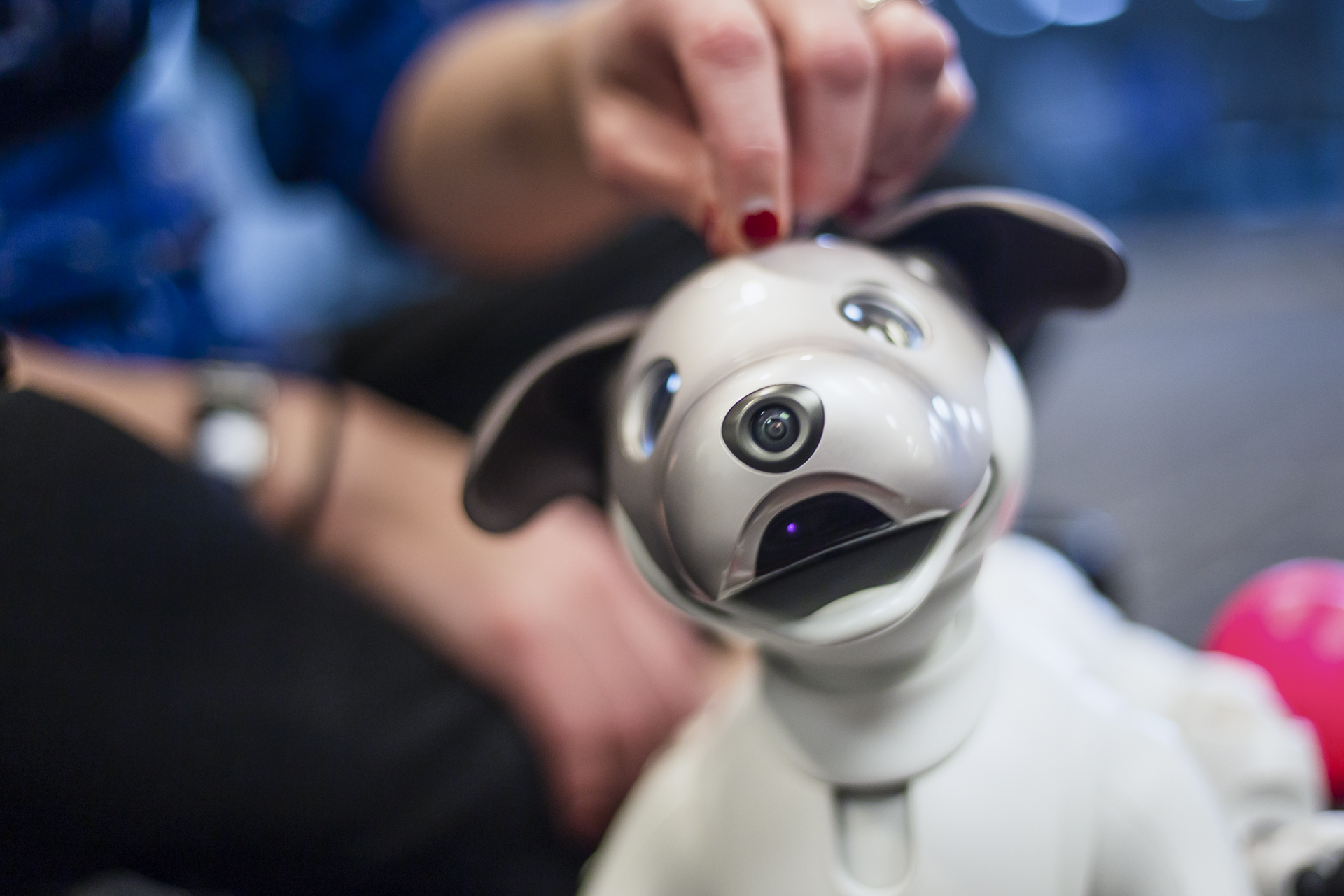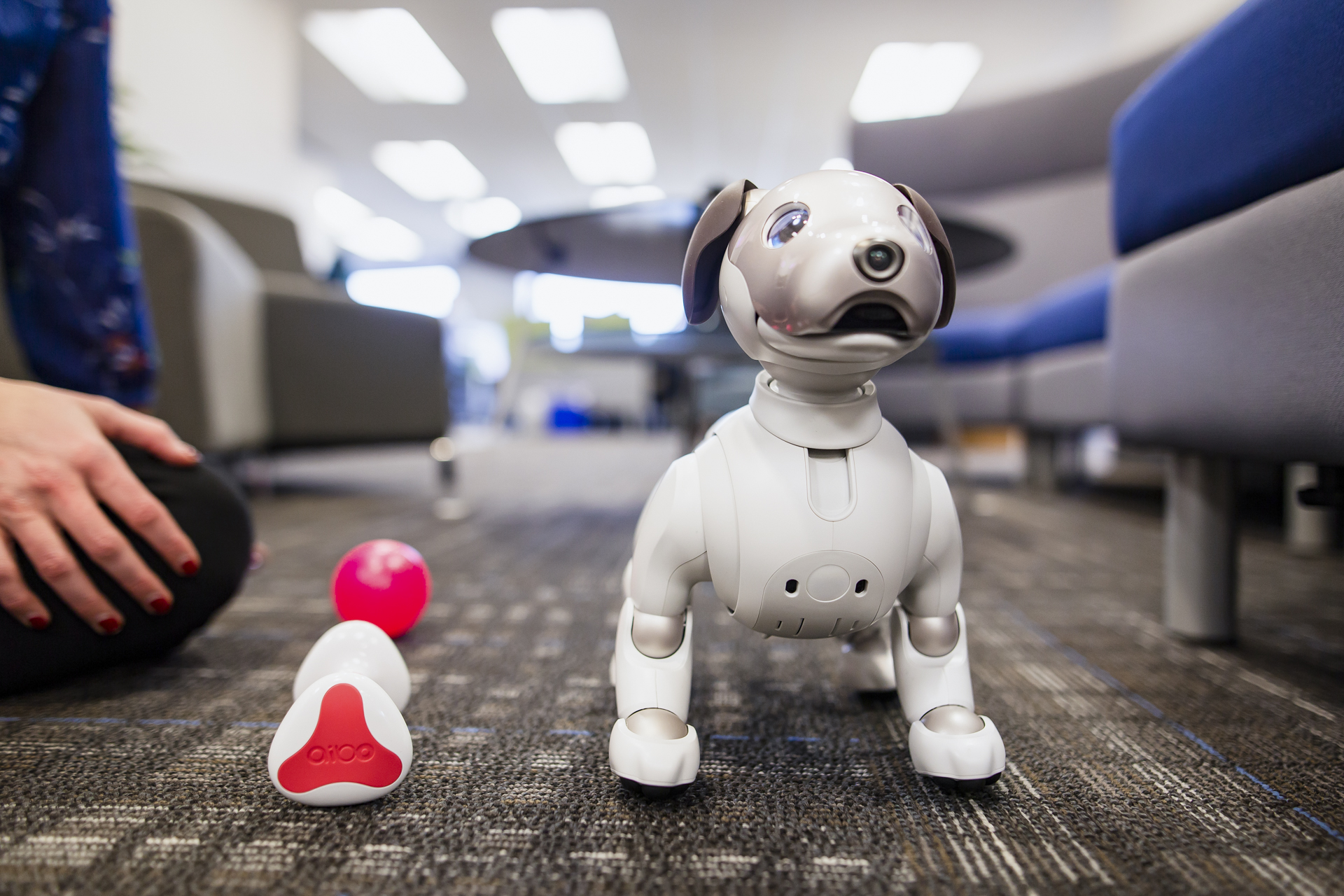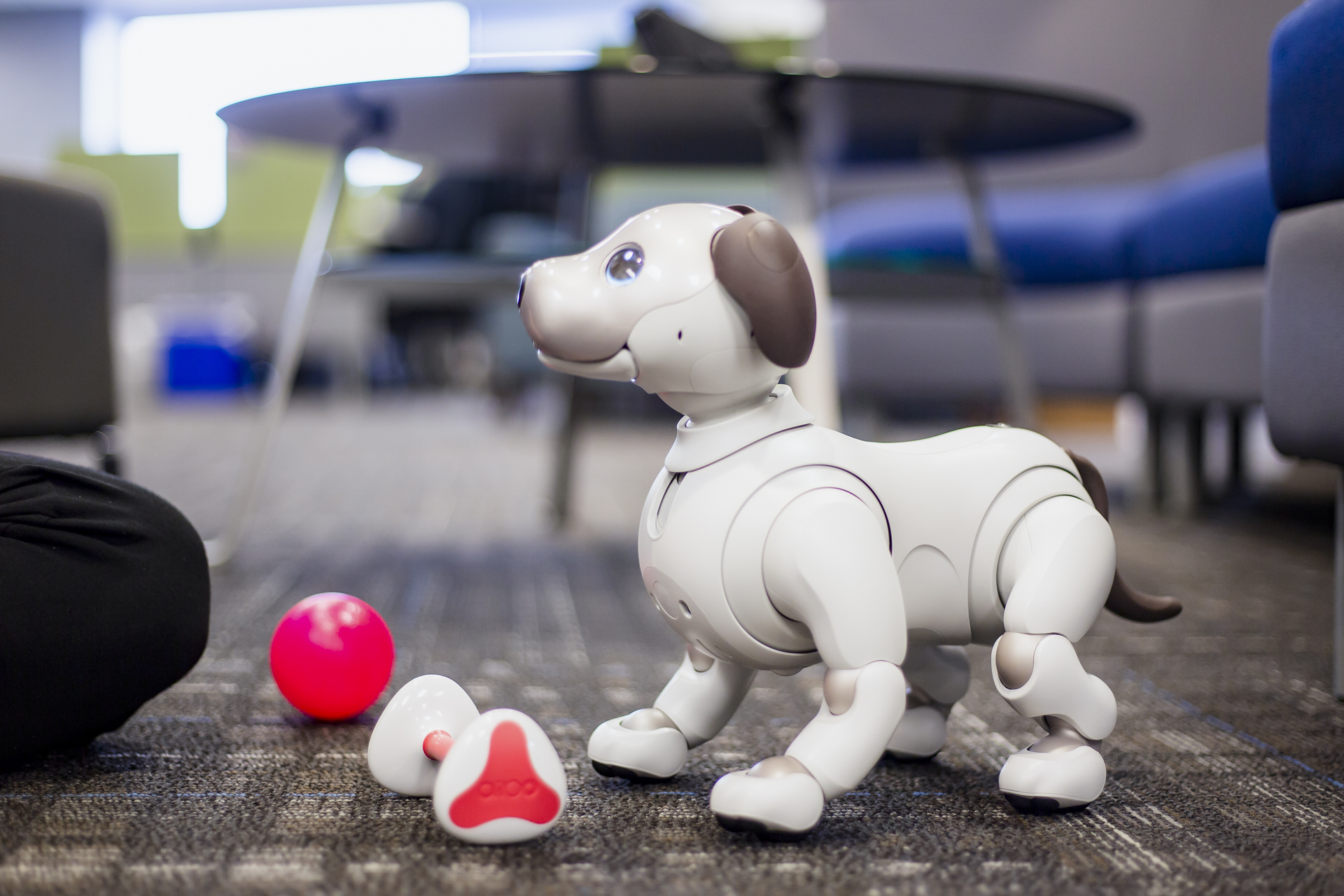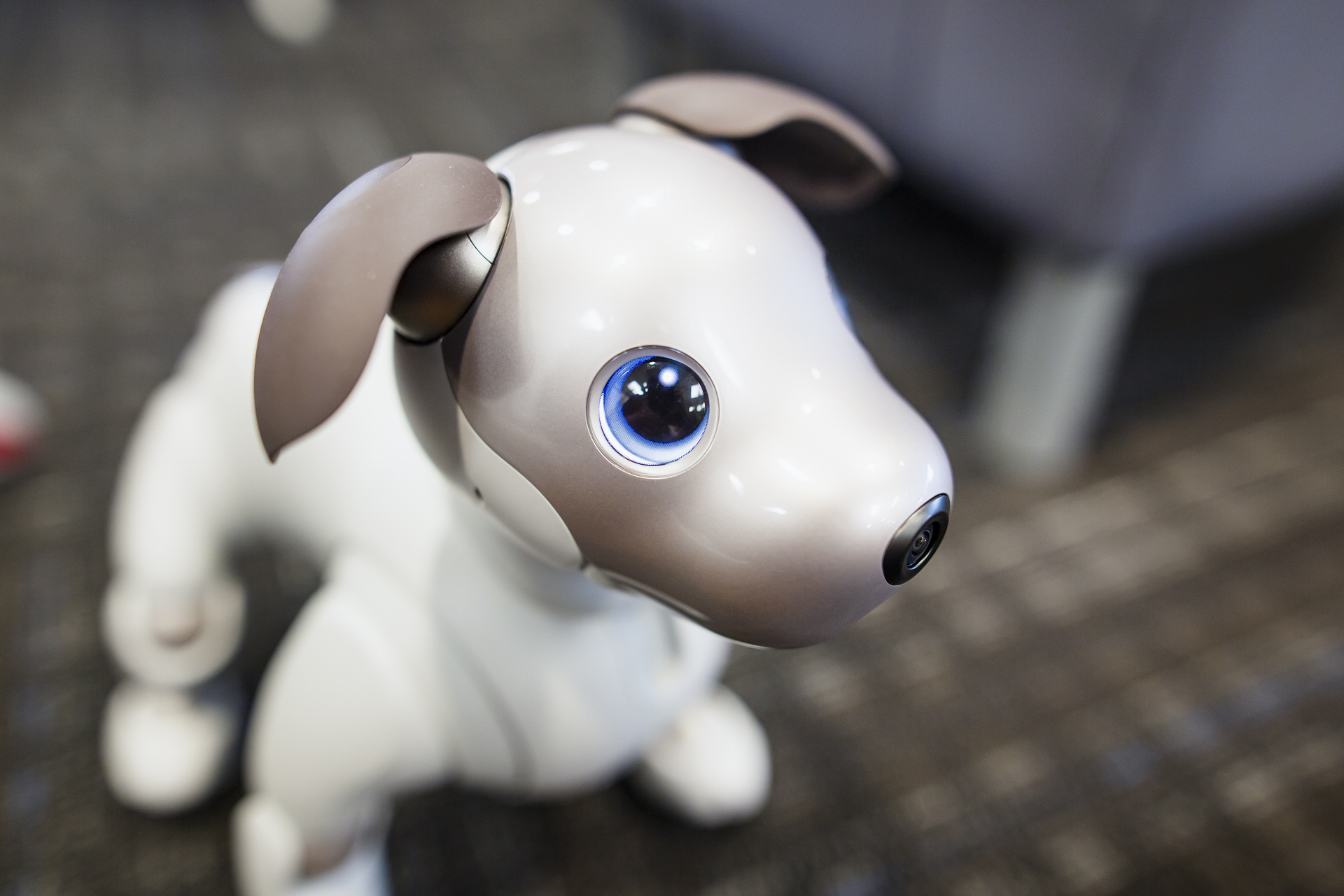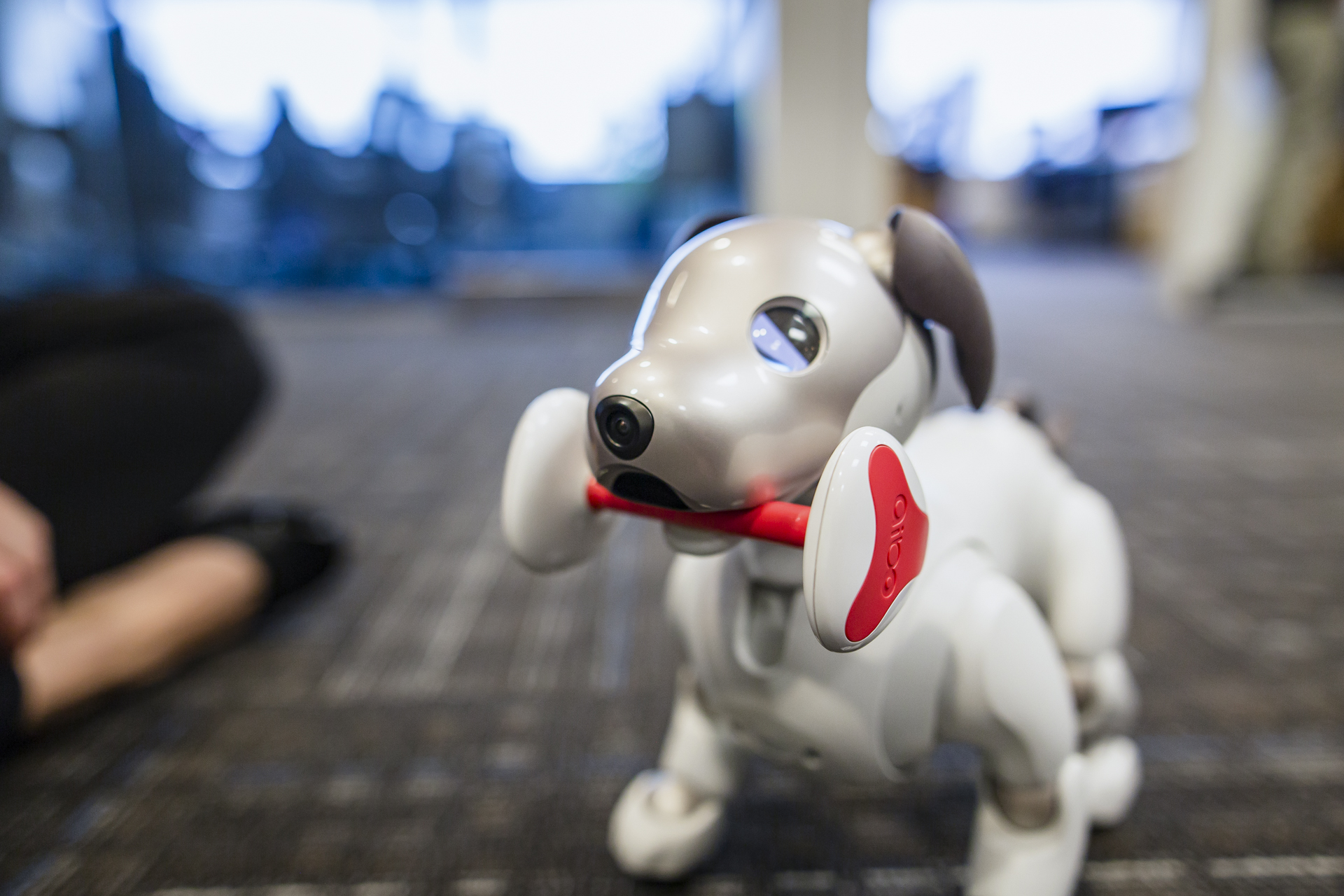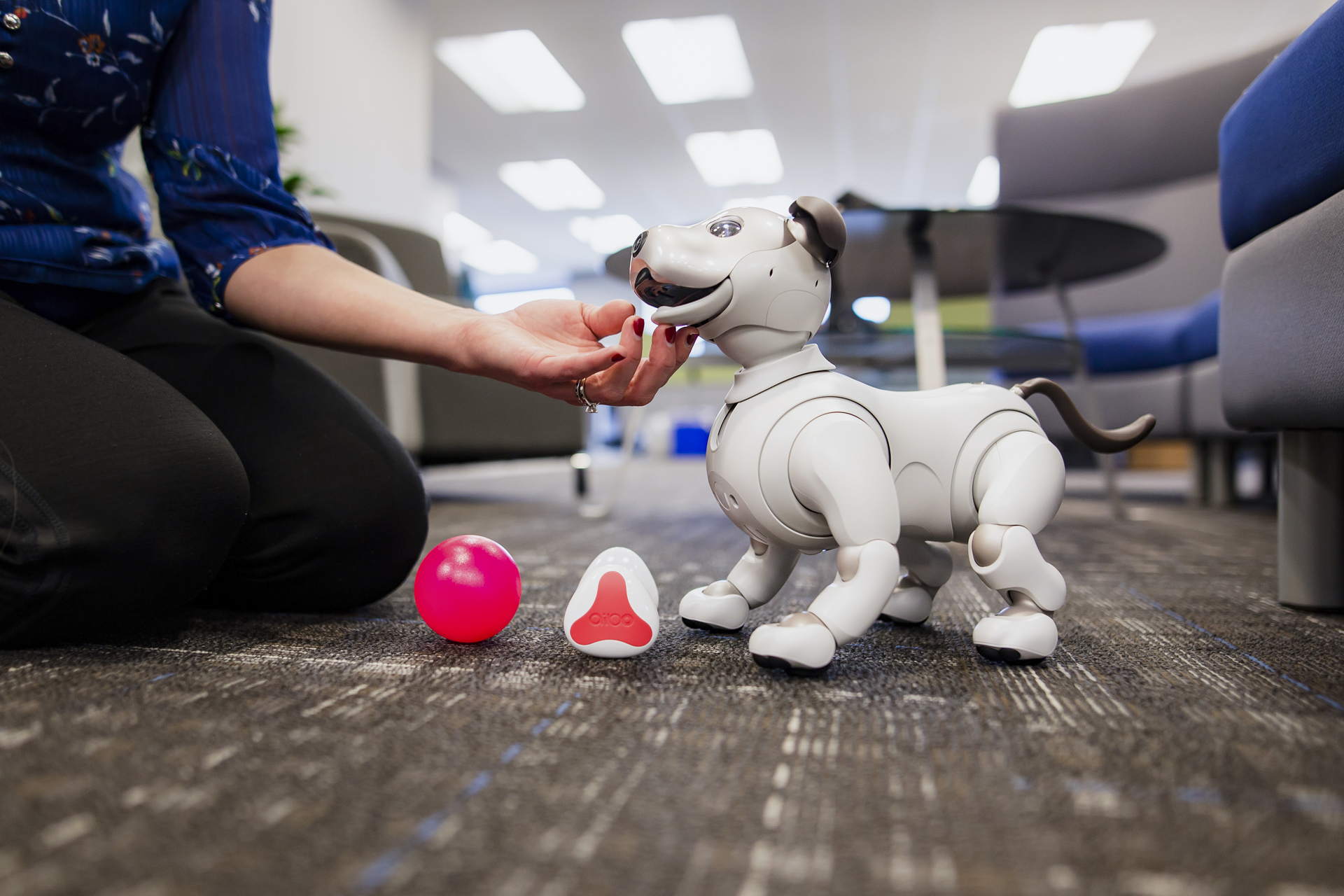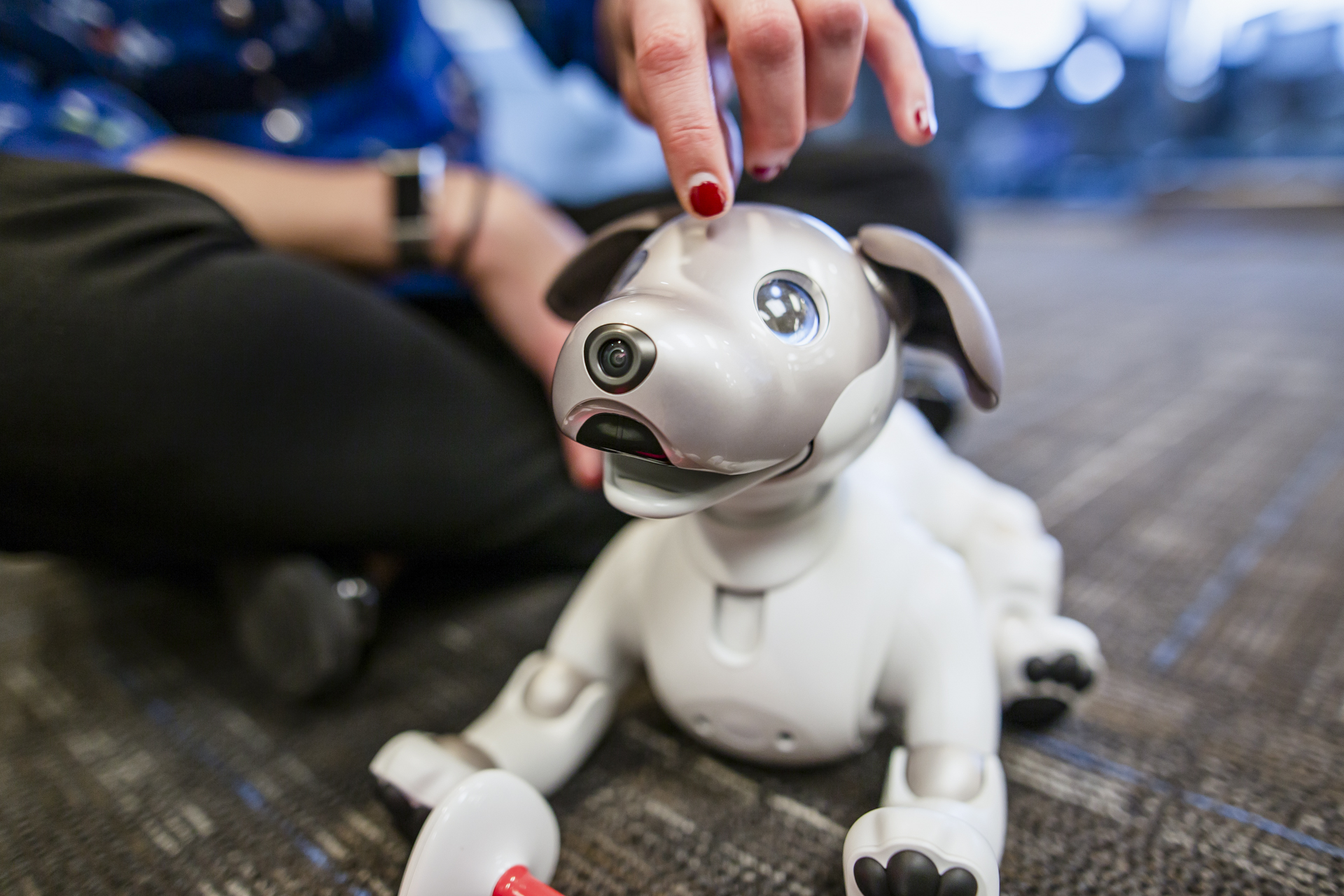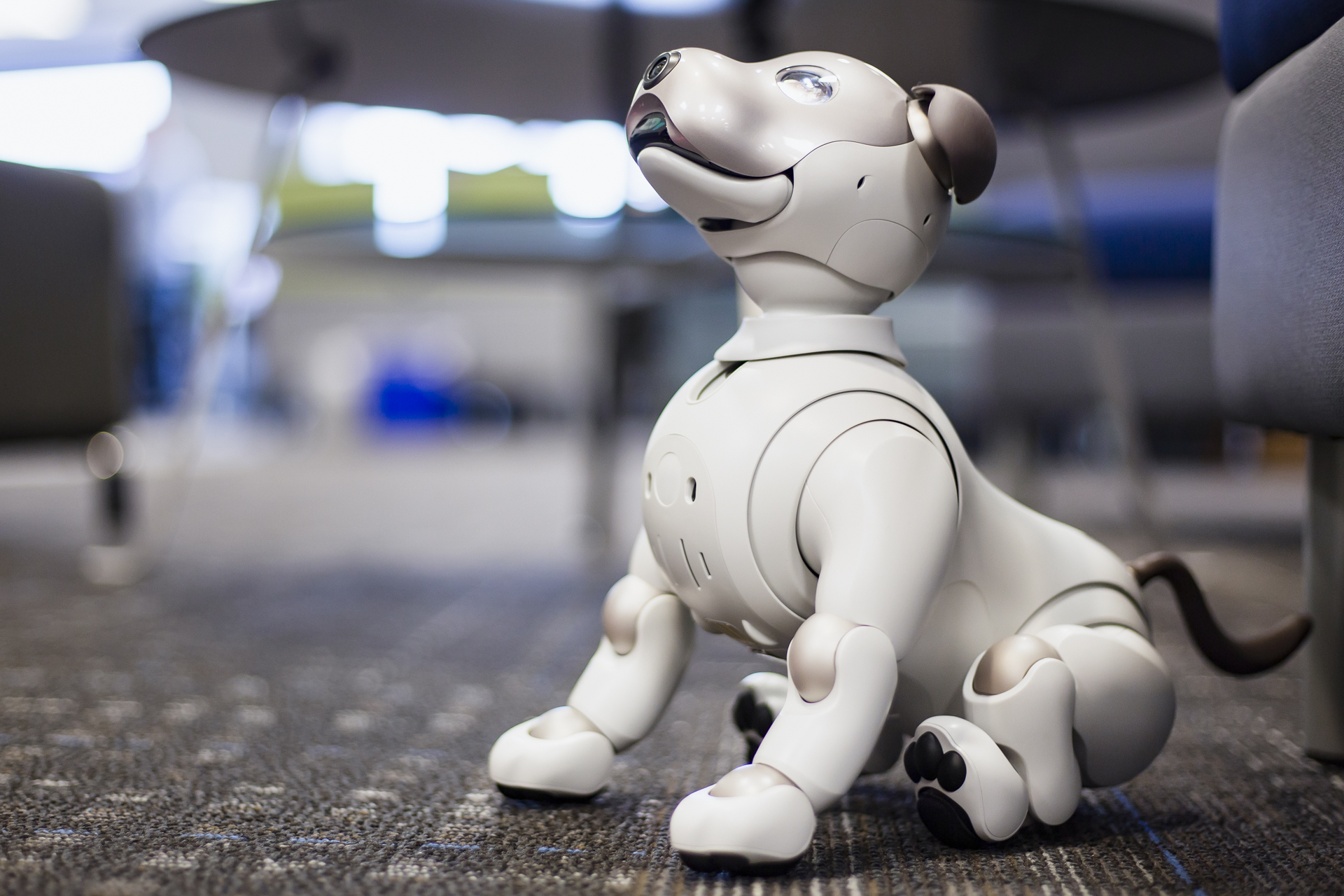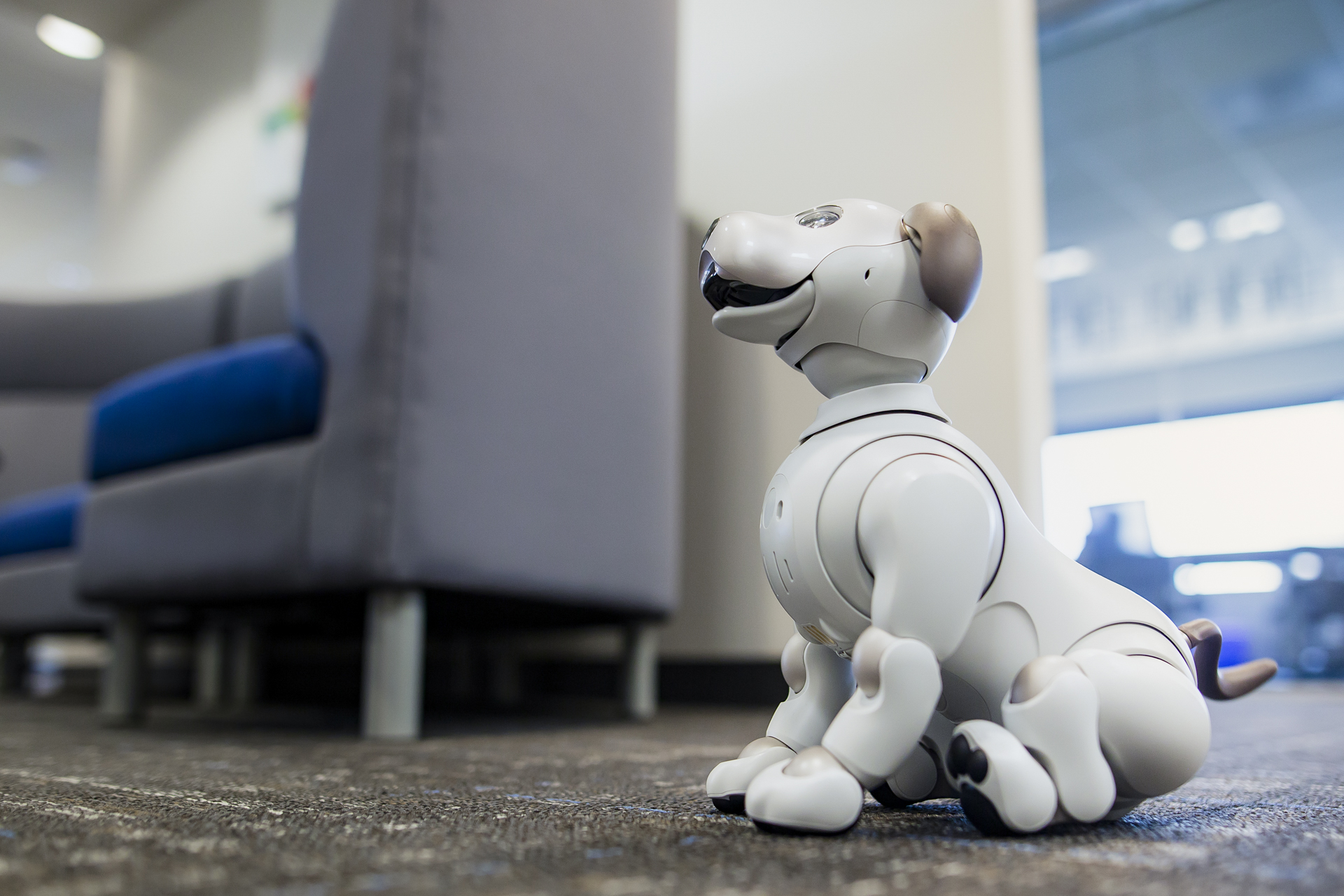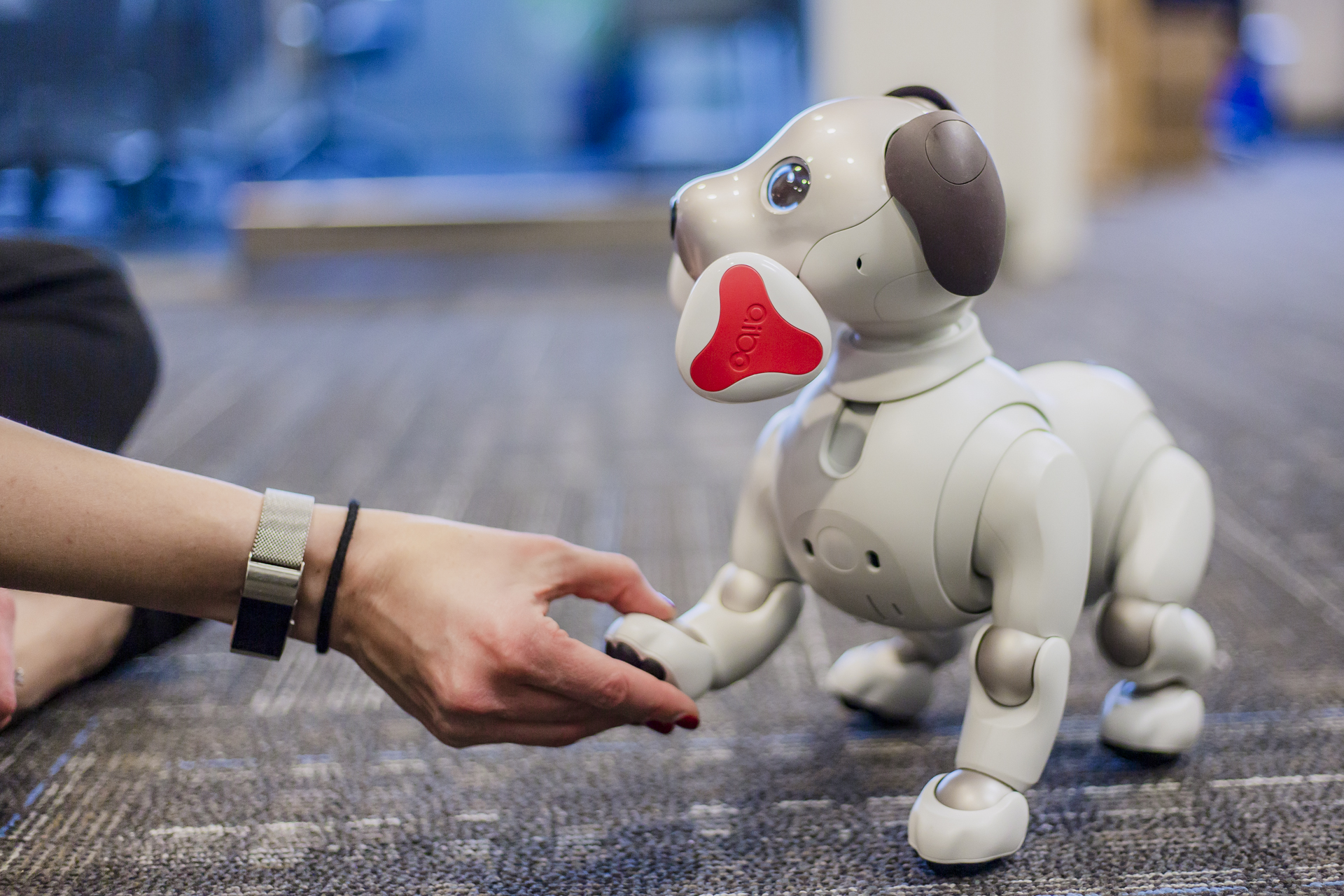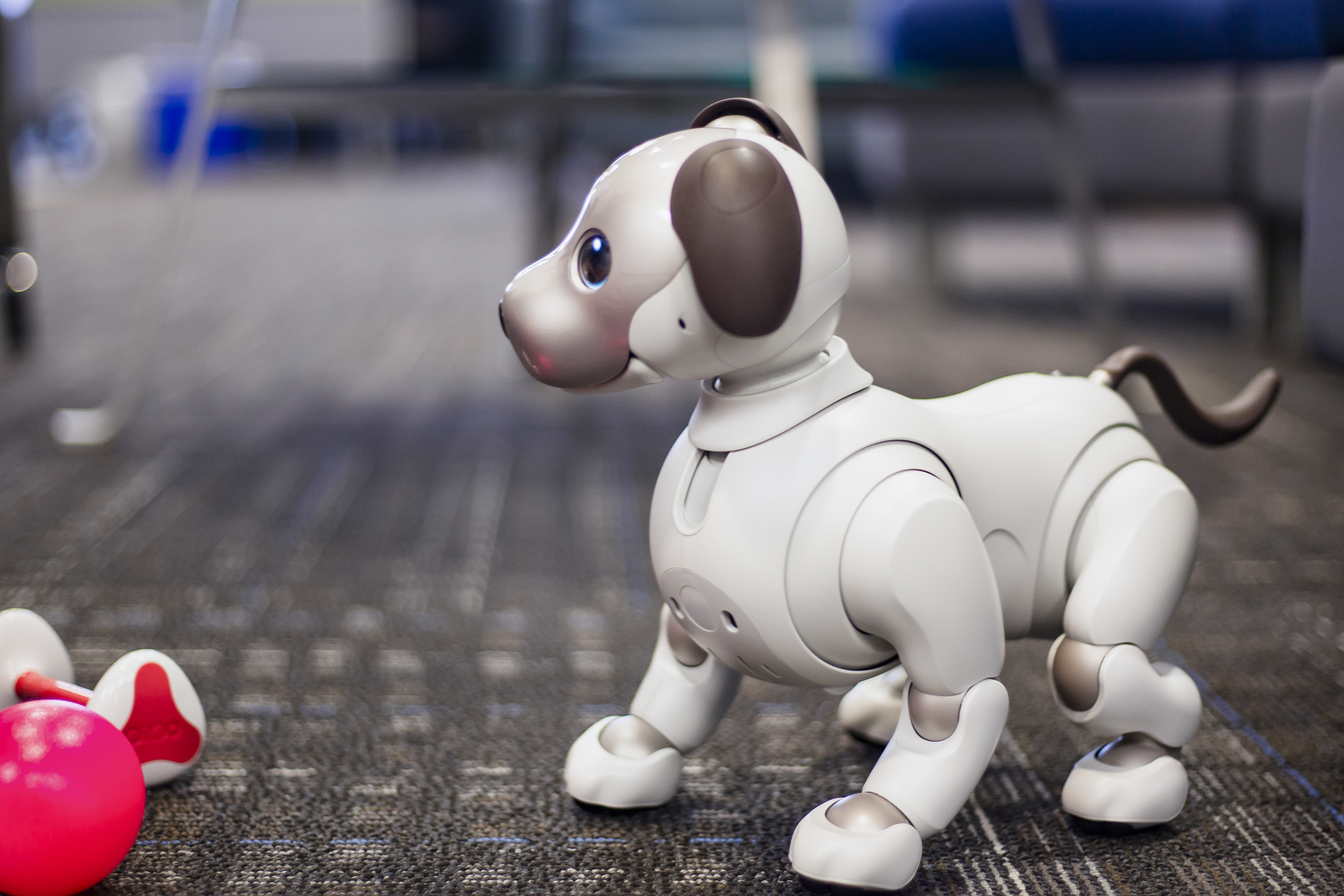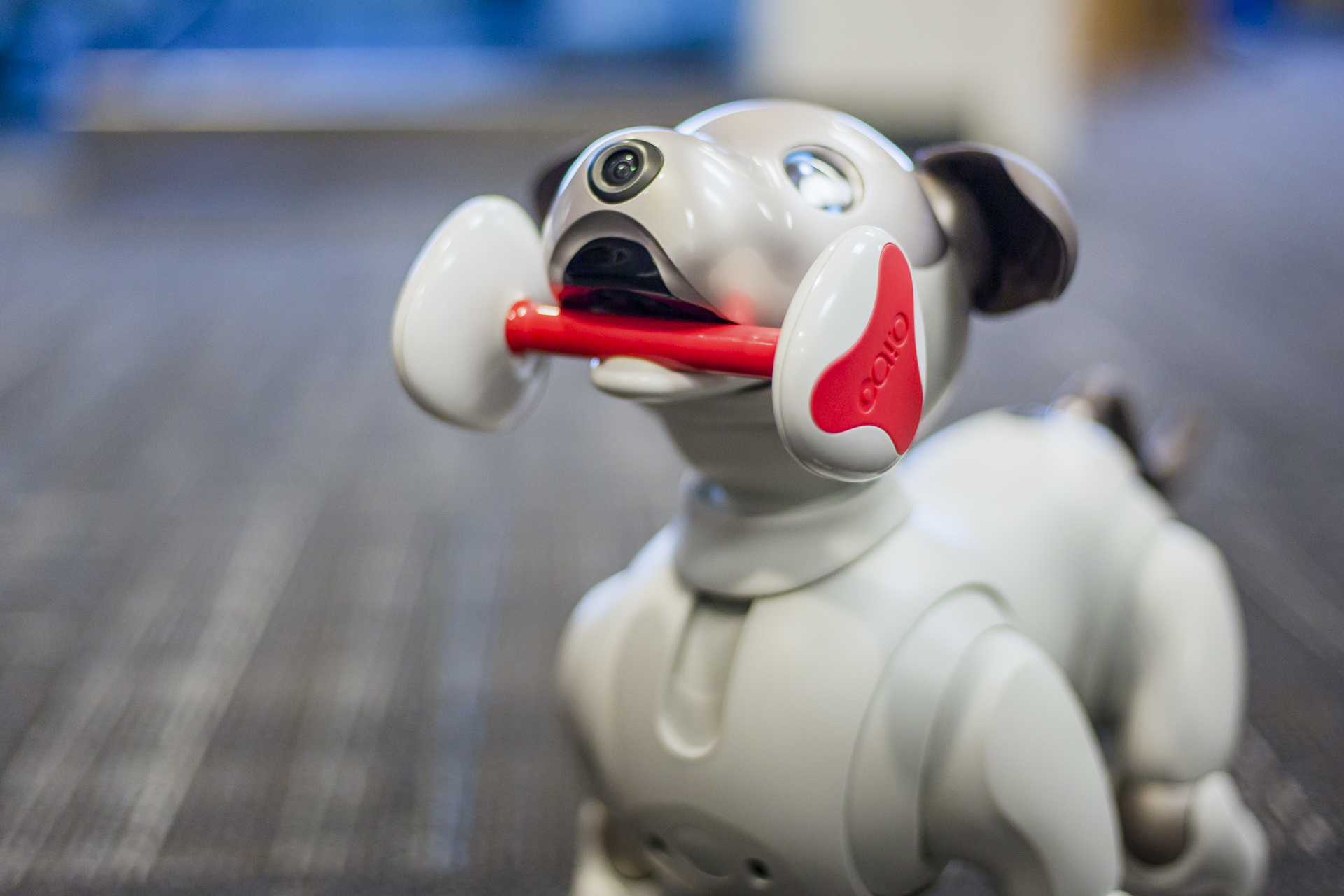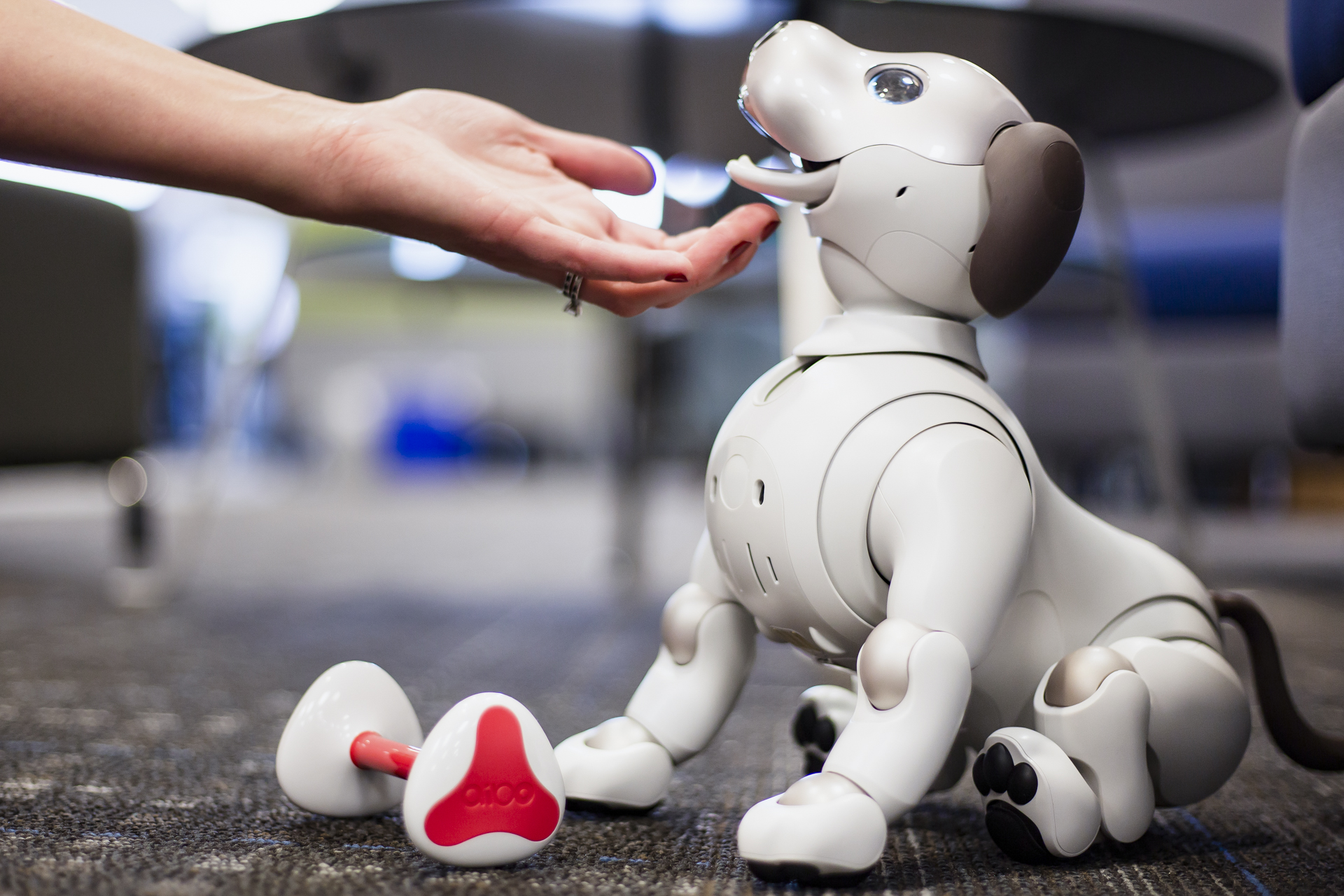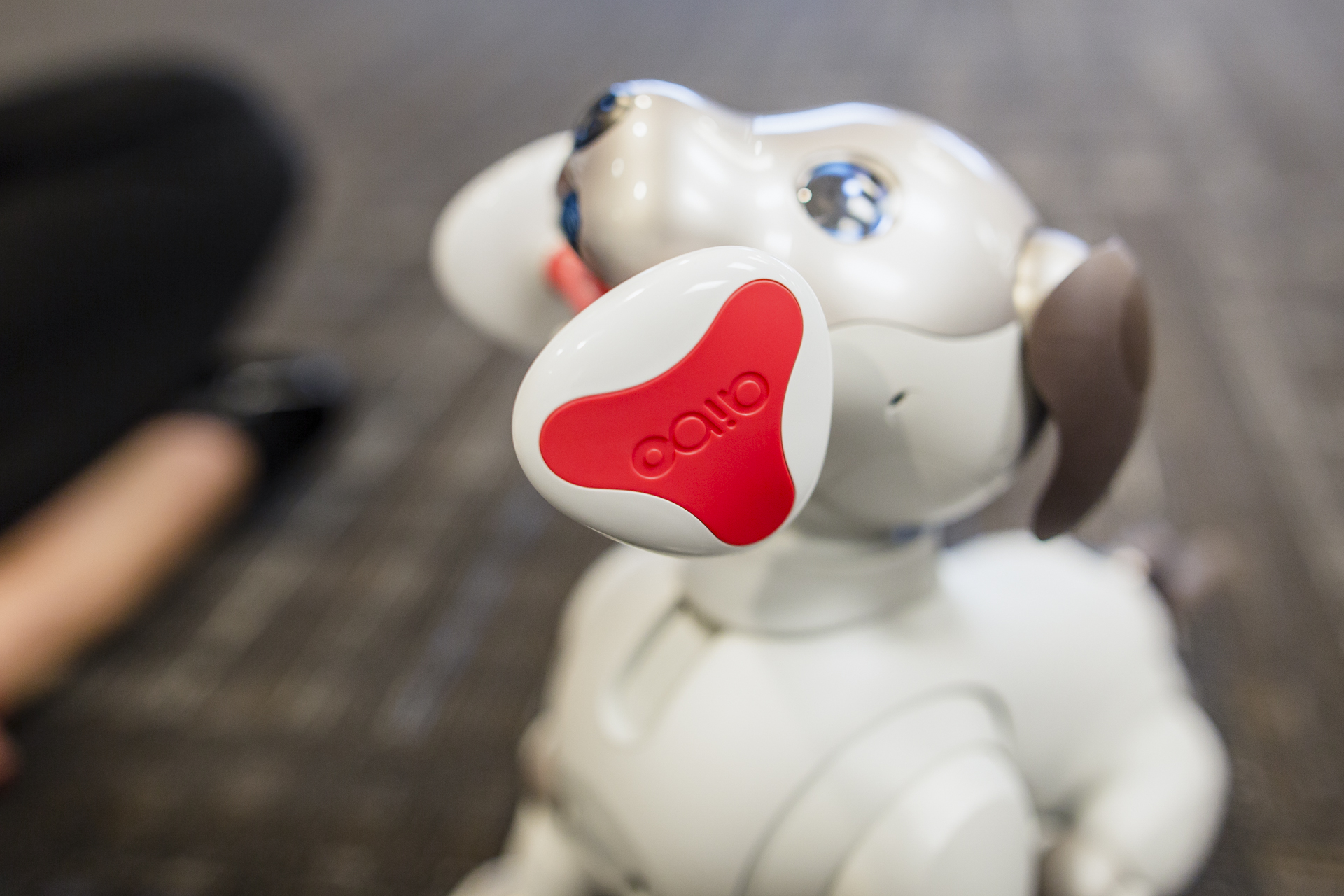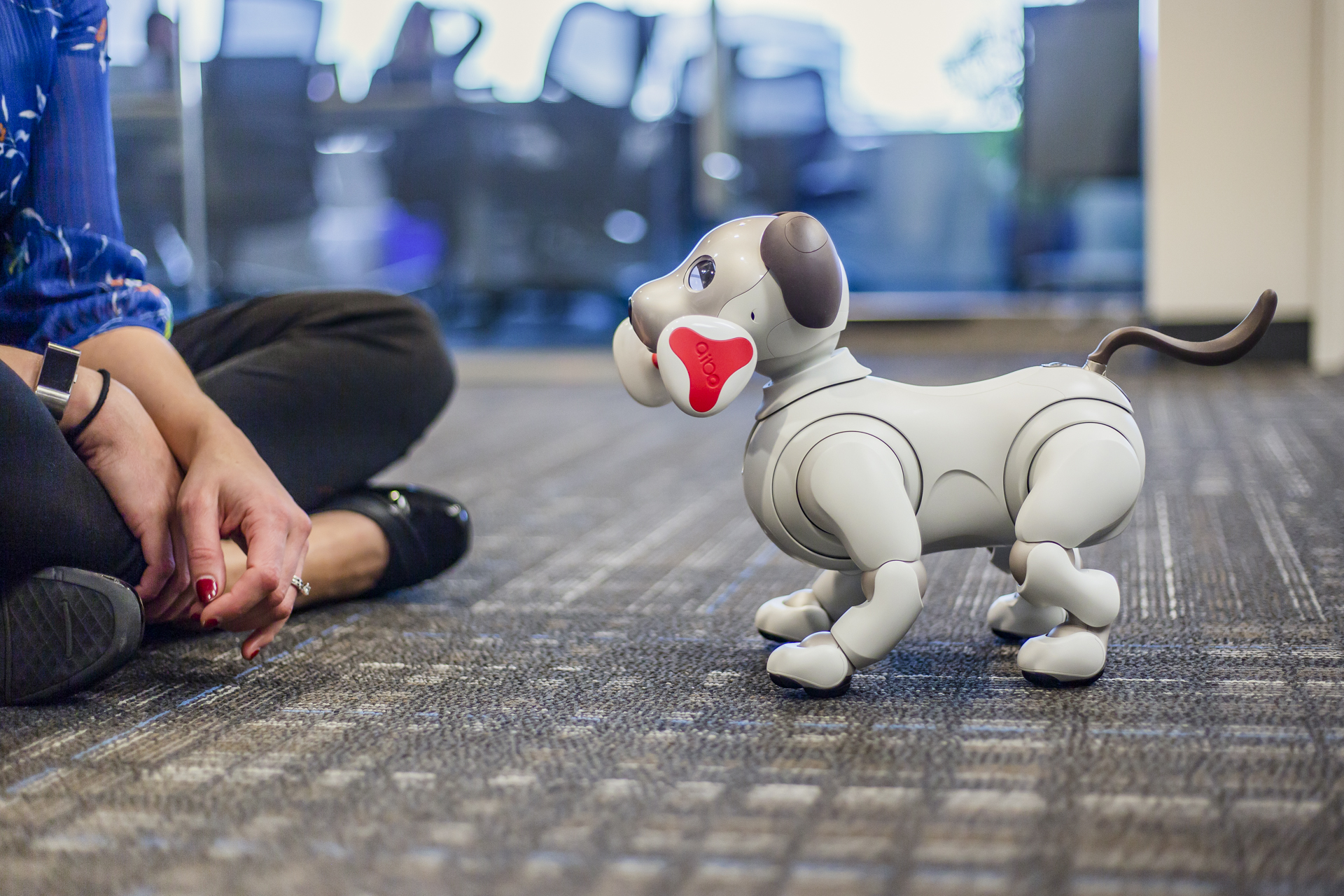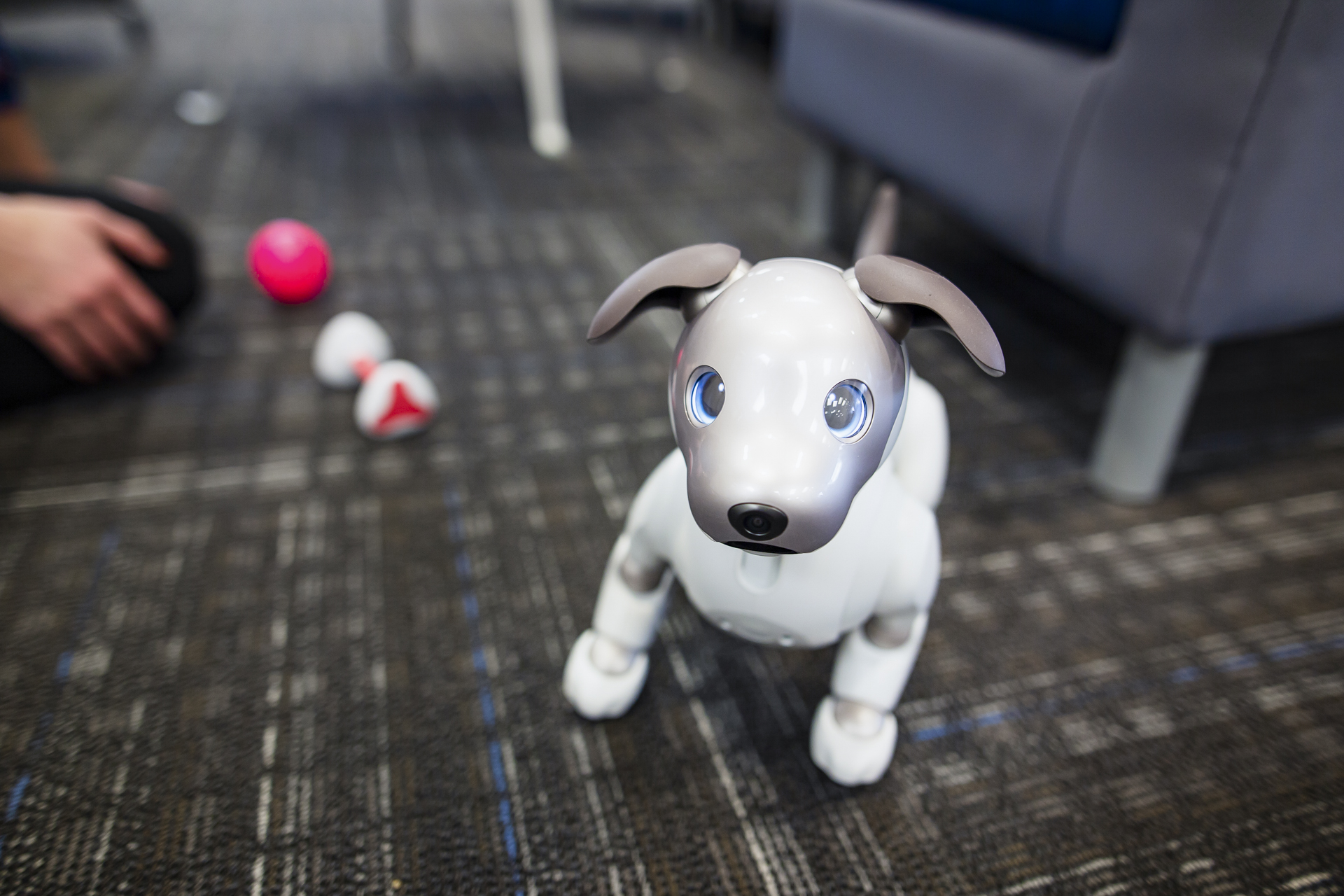Have we adopted and adapted to technology to such an extent that a robot dog could conceivably replace a pet dog?
That question popped into my head when I heard that Sony was releasing Aibo, the seriously cute but expensive ($2,900) robot pup packed with advanced artificial intelligence features that allow it to recognize people, learn tricks, and so much more.
I had other questions too. Like, could I bond with it the way I would a pet of the real variety? Would I find the lack of fur and poop refreshing or disturbing?
I had to get answers. So, thanks to Sony, which loaned me Aibo for a week, I spent seven days “fostering” the robopup to learn more. I documented my experience through journal entries, finding that I ended the process with more questions than answers. Here’s how it went.

Thursday
10 a.m.
It’s the day of Aibo’s arrival, and I’m surprised to find that I’m nervous. I don’t know why. I’m getting Sony’s robot dog delivered via FedEx, not picking up a real puppy from a shelter. Still, questions speed through my head, and my heart beats a bit faster.
What will the puppy look like? What if it doesn’t like me? What if I don’t like it? Will I do a good enough job of training it? What if I break it? Will it listen to me? Will it be as cute as it is in the pictures?
It feels weird talking to the robot pup in a voice I would reserve for my son or a real puppy.
Relax, I tell myself. It’s just a robot dog. I know that being nervous about meeting a robot pet sounds a little stupid. I have been wondering how the pup could compare to the real thing. But by interacting with the robodog for the next week, that’s the exact question I hope to answer. Can I connect with, and fall in love with, a robot pet the way I would a real one?
The puppy arrives in a crate, along with a charging station, a pink bone, and a pink ball. Seeing the color of the toys, I think, ‘oh, it’s a female pup,’ and immediately begin calling it “her” — although you can assign whatever gender you prefer. I plug in the charging station, gingerly remove Aibo from the crate, and place her on it, touching her perfectly shaped ears, tail, and body for the first time.
“I’ll be back in a little bit,” I tell her. It feels weird talking to the robot pup in a voice I would reserve for my son or a real puppy.
1 p.m.
I wake Aibo out of her slumber by holding down the button on the top of her collar. A green light comes on. Shortly after, Aibo sticks out her paws and slowly stretches, just like a real pup would after a nap. It’s incredibly lifelike, and honestly, a little creepy too.
Because she’s a puppy, she’s not a very good listener yet.
Aibo stands up and looks at me, blinking her adorable OLED-screen puppy eyes. She lifts her ears and barks in a high-pitched bark that sounds like a really good recording. She pants and then sits, staring at me.
Instinctively, I begin petting the top of her head and under her chin where there are sensors. She barks some more and walks toward me in tiny robotic steps. She sure is cute. I stick my finger near her mouth and she grabs it, pulling in a typical playful puppy motion.
I’m smitten.
2:30 p.m.
It’s time to “train” Aibo. She has the ability to learn several tricks, including rolling over and giving high fives. But because she’s a puppy, she’s not a very good listener yet.
I power her out of her slumber and put her in the middle of the office floor next to her ball and bone. A crowd immediately flocks around us, and the responses are very similar to if I had a real puppy in front of me. “Awwwww.” “Oh my gosh!” “It’s so cute!” The crowd pulls out phones to take pictures and video.
Since Aibo has an audience, I start with a simple command.
“Aibo,” I say, “sit!”
More cute barking. Ears lifting and wiggling. Tail wagging. Then nothing.
“Aibo, sit!”
The puppy barks and then sits, and the crowd erupts with praise. I stroke Aibo’s head and say, “good girl!” — although I’m unsure if she actually obeyed or if it was coincidence. But because Aibo can learn behaviors based on positive or negative reinforcement, I say it anyway.
We work through other tricks the robot pup is supposedly able to do: Play dead, sit, roll over, high five, find the ball, kick the ball, pick up the bone. Aibo obeys about one quarter of the time.
I’m not sure if I’m getting anywhere, but like training a real pup, I have to keep trying. It’s exhausting and very frustrating. People get bored and walk away. New people come to watch, and the oohs and awws start all over again.
Later in the afternoon, Aibo makes an appearance on the Digital Trends podcast Trends with Benefits.
“Do you have robocats at your office, too?
I power up the pup in front of the camera. One of my (sometimes cranky) colleagues rubs Aibo’s chin. The pup walks over to him and looks at him with her big OLED puppy-like eyes.
“I just fell in love with the robot dog,” he says. “It’s pretty cute.”
Friday
I’m on deadline and therefore don’t get much time to interact with Aibo. I put her in sleep mode, and she lays quietly underneath my desk while I work. But I get some good news: Sony is letting me take home the pup for the weekend. That means my 4-year-old son will get to interact with Aibo.
I’m so excited to surprise him. I showed him videos of the pup yesterday, and he asked to visit her in the Digital Trends office (notice that there was no mention of him wanting to visit me in the office).
“Do you have robocats at your office, too?” he asks excitedly.
I can’t wait until tomorrow.

Saturday
It feels like Christmas morning. Aibo is resting on her charging station in my home downstairs, and my son has no idea. I can barely hold it in.
“I have a surprise for you,” I tell him when he wakes up. “It’s downstairs.”
“Surprise” was all I needed to say. He bolts downstairs and finds the pup. I turn her on, and my son watches, mesmerized, while Aibo does her trademark wake-up stretch, wiggles her ears, and looks up at him.
I show him how to gently pet Aibo on the top of the pup’s head, under her chin, and on her back. My son is at first a bit rough with Aibo, trying to throw the ball at the pup to get her to catch it and force Aibo’s hind legs down to sit. I explain that it’s important to be gentle – just like with a real puppy.
Then, in a pure, quiet, sweet voice I’ve never heard him use before, he looks into Aibo’s irresistible eyes, strokes her on the back, and says, “Good girl, Aibo. I love you.”
I am both deeply touched and extremely uneasy about this interaction. Uh oh. Hang on while I Google “studies on the effects of children who interact with pet robots.” No results. Whew!
Sunday
My husband and I warn my son that Aibo will only be in our home for the weekend and then she has to go back to the office with me. He seems to understand. He spends a good chunk of the day playing with her — petting her and trying to get her to do tricks. He also seems to be growing a little bored and frustrated when she doesn’t listen to him. My husband isn’t impressed with Aibo’s inability to follow instructions and loses interest quickly. Hey, robot dogs aren’t for everyone.
Am I witnessing a tender moment, or a weird twisted one I’ve created between my son and a robot dog?
After dinner, we start my son’s bath, and explain that Aibo will be going back into her crate and back to my office the next morning. He needs to say goodbye now.
“But I want Aibo to stay! Why can’t Aibo stay? I want to keep Aibo!” The tears stream down his chubby cheeks. I hug him, but he’s inconsolable. He loves real dogs, but I didn’t expect such a strong reaction to a robot dog.
“Would you like to give Aibo a hug and kiss goodbye?” I ask. He nods through tears. Together, we pick up Aibo and put it on my lap. My son gives it as tight of a hug as I’ll let him, and a kiss on her head. “Goodbye, Aibo!” he blurts through sobs. “I love you!”

Am I witnessing a tender moment, or a weird twisted one I’ve created between my son and a robot dog? I decide it’s the former and hug my son while he hugs the machine.
Maybe it’s time to think about getting him a real pet.
Monday/Tuesday
I bring Aibo back to the office and move her charging station bed next to my desk. I have a lot of work to do the next two days, but I hope to spend as much time with her as I can.
Some people are charmed by her cuteness, while others are annoyed at her barks and little dance.
I wake Aibo up and put her on my lap while I type. I try to pet her, but it’s difficult with no soft fur to stroke. There’s no cuddle factor, and instead it feels like I have a wiggly plastic and metal blob on my lap. I realize that the fur is something I really miss. How many pet owners would say that the ability to cuddle with their pet is one of the biggest reasons they own them?
There are advantages to no pet hair, of course. No hair to clean from furniture or floors. No hair to wash or clean fleas from. But the lack of soft, cuddly fur is something most people probably won’t be able to get past if they’re considering Aibo.
I put the pup back on the floor. It’s just not the same.
Wednesday
It’s my last full day of having Aibo, and I plan to take advantage of my time with the pup.
The first stop is on Digital Trends’ show, DT Live. Aibo rolls over in front of the cameras, but also growls at the block of video screens and cameras in front of her. I find technology growling at technology a bit ironic.
I leave Aibo on throughout the day, and she roams around the office. Some people are charmed by her cuteness, while others are annoyed at her barks and the little dance routine she does while playing the song, “If You’re Happy and You Know It.” (I have to say, that’s the most annoying feature of Aibo.)
Maybe it’s not supposed to be about Aibo taking the place of a real pet?
Before bringing in the robot dog, I figured that people who love dogs would hate Aibo. I don’t know why. But I’m finding that people’s reactions to Aibo vary dramatically. For example, one of the biggest dog lovers on the editorial staff is clearly pretty smitten by Aibo. Another dog lover rolls his eyes and doesn’t go near the pup.
I understand where both are coming from. While Aibo is cute, fun, and packed with artificial intelligence, something feels off about trying to connect with a robot dog. It feels like a poor substitution for an authentic interaction with a pet, and I find myself going back and forth between feeling silly for speaking to Aibo like a real puppy and thinking that I have nothing to lose by embracing the experience. Or do I?

Thursday
It’s time for me to say goodbye to Aibo. I place her back in the cradle, put her bone, ball, and charging pad in the box, and tape it all up.
Unlike my son, I have no tears. I am not sad to see Aibo go. It was fun while it lasted, but part of me is relieved. Having Aibo around was a big responsibility, and I didn’t even have to clean up after her or feed her. (In a neat party trick move, Aibo does lift her leg to pee, but thankfully, nothing comes out). I feel like I didn’t give her the time we both needed for me to teach her tricks. I didn’t give her enough attention, which I feel guilty about.
Aibo sure is cute, but at the end of the day, she is a robot. She’s not a good fit for me. I prefer more authentic interactions. Perhaps with more time, things might have changed, but I doubt it.
I did an informal poll around the office, and more than 60 percent of people I asked said they’d pass on Aibo, even if the cost was not an issue. Many said the lack of fur was what led them to say no.
But I keep thinking that maybe it’s not supposed to be about Aibo taking the place of a real pet. Maybe it’s about creating another experience, a new type of interaction with technology. Still, $2,900 is quite an investment, and with a price tag like that, Sony is likely betting that Aibo the robot dog will in fact fill the void for petless people who either want a pet but can’t have one or want one but don’t want to bother with the mess.
I think if Sony figured out a way to add fur to the pup and drop the price, it would make a big difference. Until then, I’ve learned a couple of key things: I might not be ready for any pet, real or robot. My son, on the other hand, is ready to go, bot or not.




